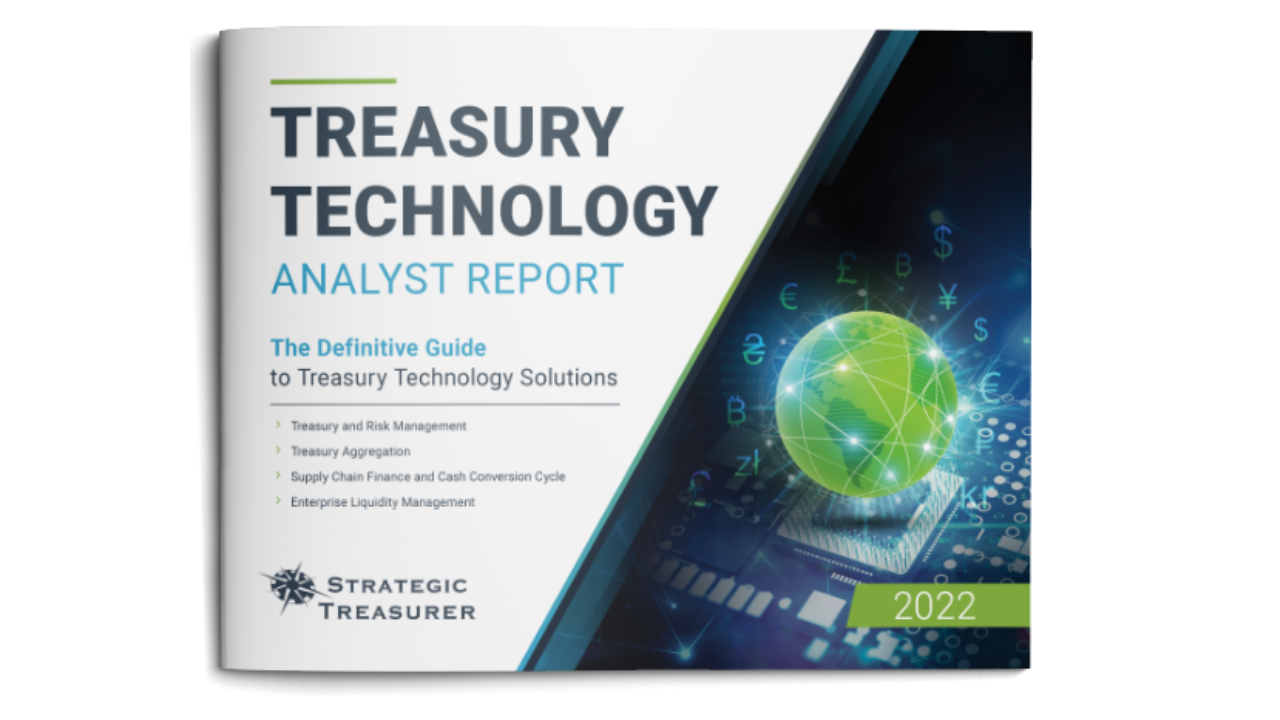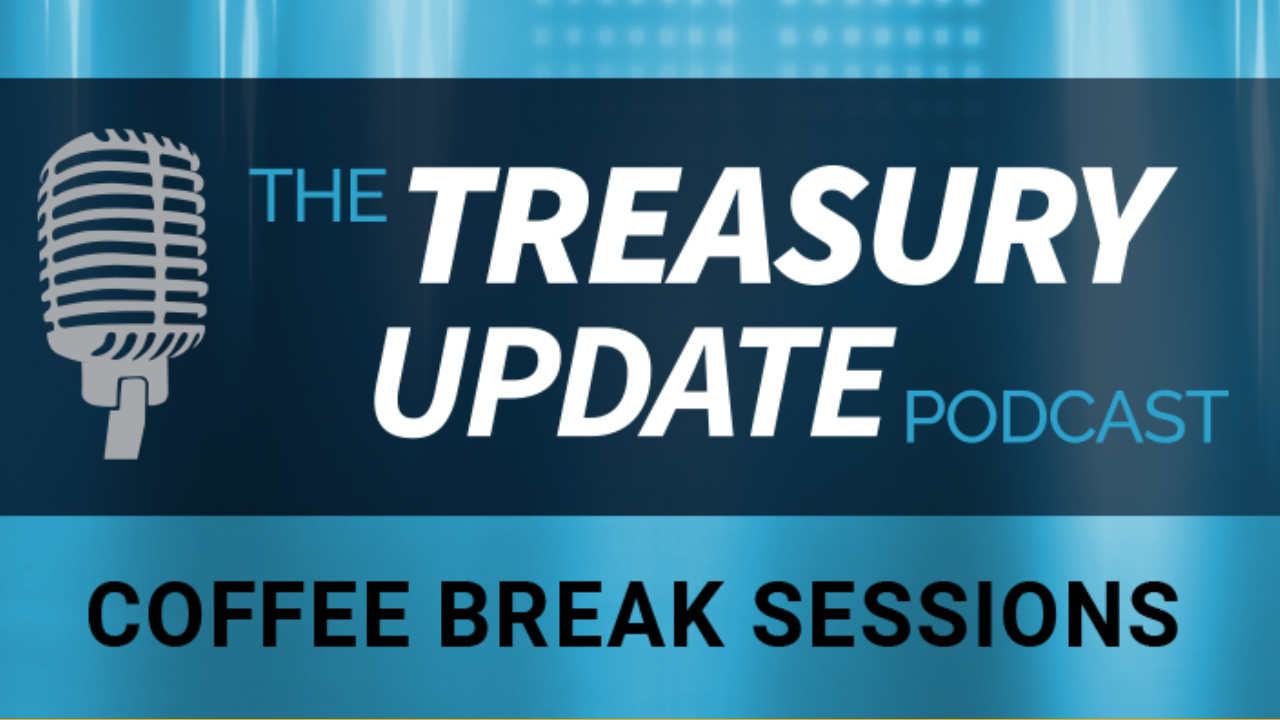
Session 73
Coffee Break Session:
What Is Debt Funding?
Host:
Jason Campbell, Strategic Treasurer


Speaker:
Paul Galloway, Strategic Treasurer


Episode Transcription - (Coffee Break Session Series) - Episode 73 - What Is Debt Funding?
Jason Campbell 00:03
Welcome to the Treasury Update Podcast, Coffee Break Sessions presented by Strategic Treasurer covering foundational topics and core treasury issues. And about the same amount of time it takes you to drink your cup of coffee. I’ll be your host Jason Campbell, business development leader at Strategic Treasurer. Alright, so on this episode of the Coffee Break Session, my guest, again is Paul Galloway, Senior Advisor at Strategic Treasurer. And Paul just came, you know, again, every time we have a discussion, I just, you know, I learned so much from your insights and perspectives. I’m really looking forward to this, this session around debt funding. How are you doing today?
Paul Galloway 00:37
Doing good. Thanks for having me back to have a short Coffee Break conversation.
Jason Campbell 00:43
Absolutely. So talking about this, I know as far as you know, what we’ve been doing, and these past couple series, around investing, and really kind of going into more of learning about debt itself and to this series, when you think about debt, you think of something negative, you think about funding, you think of something positive. So learning a little bit more about this topic, it’s gonna be really cool. So kind of kick us off here about if you can just give us some insight of exactly what is debt funding?
Paul Galloway 01:09
Yeah, absolutely. Jason. So when you think about debt funding, you think about an obligation that a company has, by borrowing funds from somebody or a group of investors to fund a particular aspect of their business. debt funding can come in various forms. When we say debt funding, what I, what I visualize, or I see here is anything from short term, to long term to different types of instruments. And so when we think of funding on the short side, what companies will do will, they will engage in issuance of commercial paper, they may develop a commercial paper program. They issue commercial paper to fund short term cash flow. Typically, it’s for operations or something specific that the organization is doing, probably growing their business or just leveraging short term cash flow to continue the expansion of what they’re doing. Then there’s long term funding so that they can engage and such as senior debt, which is kind of the most common piece. So these issuances can be, you know, two 510 plus years in duration. They go to fund typically specific things, although you hear a lot of companies little safe use of funds for general corporate purposes, which gives them more leeway to use the capital for a variety of things. Sometimes they use the debt funding to fund let’s say, an acquisition, they’ve acquired a firm, or they’ve acquired some group of assets, that is particularly good for the organization that helps them grow and help them helps them to continue to support the business.
Jason Campbell 03:15
So I know that you mentioned a couple of examples on some debt funding. But if you can go a little bit deeper here on why would a company really want to issue debt.
Paul Galloway 03:23
You know, organizations, let’s just take up public entities, something that’s publicly traded, because there’s private organizations that will issue debt, just like, you know, a publicly traded organization. But the way they fund with issuing debt is is different than you would typically see for a publicly traded organization. But the reason that they would do that is there’s components on the balance sheet that make up capital. Yeah, and so if they’re looking at the cost of that capital, they’ll first look at equity, which is typically really high cost, it’s the most costly piece of capital funding, that organization will have it so you might see something, you know, in the range of 10 to 15%, for the cost of equity capital or stock issuance. And what they’ll do to offset the cost is they will issue debt at a lower rate in the you know, let’s say in today’s terms, that depending on the duration, that their debt can be anywhere from, you know, five to 8%. And so, it’s lower costs capital funding than what an equity issuances. So what they’re trying to do is reduce their overall weighted cost of capital and and continue to fund particular initiatives or strategic to the organization at a lower cost.
Jason Campbell 05:08
And what type of debt instruments can they issue.
Paul Galloway 05:11
Some of the typical types that you would hear of would be senior debt, you might hear them, you know, issue commercial paper for the short term. But they can also do other things that would be more hybrid and structure. So they could issue a piece of debt that has, or is treated as equity. And so they call that hybrid debt. So it has components or equity like, but it has components that are debt, like in these instruments would be a little bit more costly than what senior debt would be. And then they can also issue debt that has components of optionality to it, meaning that the holder of the Bond could convert the bond into equity shares. And so that has a different cost component than senior debt. They could also issue or I guess, let’s step back and not call it necessarily issuance, but it is a capital raise, it would I guess, technically be an issuance, they could go into maybe a contingent facility. And what that means is contingent capital is is you get a group of banks that will back or commit to a contingent capital facility, meaning that they will go to investors to raise the capital, based on the terms that you put in place. So you say I want $500 million, that contingent capital, and then you get a group or consortium of banks that will commit a certain level of capital to that $500 million. And let’s just for simple term, say that you got 10 banks and they all commit $50 million each, you get to $500 million, you don’t have to draw on that facility today. That’s the contingent part. Meaning that you have that sitting on your balance sheet as an opportunity to raise capital when you need it in there are certain terms that go along with that, where you have to pay facility fees on that, even though it’s not drawn, and then when you draw upon it, then there’ll be a higher cost associated with it tied to the coupon that you agree to in the terms of the contingent capital facility. So these are kind of unique facilities, but they give you the opportunity to have something on the balance sheet as a hedge against any risk associated with raising capital in the future.
Jason Campbell 07:59
So it sounds like it’s a pretty almost a unique concept as you described it. And as far as almost, there can be some pretty good upside to both from a from raising it. And as far as even investing into it. So I think you hit on a couple of key key pieces here that made it even more intriguing. So is there a limit as to how much an organization can issue?
Paul Galloway 08:20
Yeah, there absolutely is. So when you think about what corporations will do to raise capital is they’re going to go to their banking partners. And so they’re going to have a group of banks that they go to, to issue to issue a debt instrument. And what they’re gonna do is, they’re going to do a variety of things as part of their due diligence process, to ensure that the investment side of the platform because you’ve got an issuer, that’s borrowing funds, and then you’ve got investors who are making an investment in a bond that gets put out in the market by this group of banks, right? Well, the investor is going to take a look at, okay, what is this company that, you know, backing this debt? Because that’s the underlying portion of the debt that’s being issued? That’s an underlying backing, what investors are gonna look at, okay, what type of company is it? What does the financial statements look like? What is, you know, their line of business, you know, what is their strategic aspects that makes this, you know, a good investment for me, given the coupon that they’re going to give me so the investors are looking at it before it gets to the investors, what’s going to happen is, is that the banks are going to spend time talking to the corporation. And so they’re going to ask questions that are going to ask him information for information They’re gonna do an analysis to look at the credit that the organization has. And all that is to say that they believe that the market will be able to withstand a certain size, let’s say it’s 500 million. That’s kind of where we’ve been parked at. But let’s say it’s 500 million. What that is saying is, given the current balance sheet structure that the company has the future cash flows that they expect to have from that organization, you can go out into the market, and the market is going to be willing to give roughly $500 million for this particular issuance. So the limitations can come from what the banks expect, they’re going to be able to get and what the market is going to do. And typically, when the banks go out, they’ll do what’s called a roadshow. And they’ll talk about the company talking about the future, the company, the credit aspects of the company, to sell it to the investors. And by doing that, they’ll get a certain level of participation, well, that level of participation is limited. It’s only going to be so much. But what you try to do with these issuances, is get more interest or participation than what you expect meaning, hey, I want to raise $500 million. But the market is telling me that, hey, two times add is interested in this debt issuance. So you have an opportunity during this process, that you could actually upsize the issuance. So instead of 500 million, there could be 600 million because you got so much interest and demand in the market was willing to accept that. But there is that limitation, there’s a cap to it, you can only do so much. So you can’t be a company that’s entirely funded by debt alone. There has to be an equity component. And there is a limitation to the full amount of capital that you can have on the balance sheet.
Jason Campbell 12:09
So debt finding interesting concept for sure. And really, you know, why does a company want to issue it and the different instruments that are available? Well, Paul, thank you for joining me today. Again, it’s always just a joy to have a great conversation with you. And for our listeners. Please be sure to tune in every first and third Thursday of the month for a new episode of the Coffee Break Sessions. As usual. If you have any questions, comments or feedback, please send us a note at podcast@strategictreasure.com. Until next time, take care.
Announcer 12:40
This podcast is provided for informational purposes only and statements made by Strategic Treasurer LLC on this podcast are not intended as legal, business, consulting, or tax advice. For more information, visit and bookmark strategictreasurer.com.
Treasury Tech Analyst Report
Researching new treasury and finance technology can be overwhelming. Strategic Treasurer has stepped in to help. Explore our definitive guide to the treasury technology landscape and discover detailed, data-based coverage of:
- Treasury & Risk Management Systems
- Treasury Aggregators
- Supply Chain Finance & Cash Conversion Cycle
- Liquidity Enterprise Management
Coffee Break Sessions – A Treasury Update Podcast Series
A part of the Treasury Update Podcast, Coffee Break Sessions are 6-12 minute bite-size episodes covering foundational topics and core treasury issues in about the same amount of time it takes you to drink your coffee. The show episodes are released every first and third Thursday of the month with Host Jason Campbell of Strategic Treasurer.




